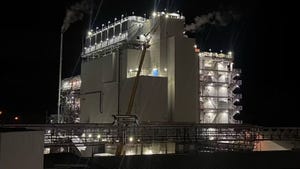Steel solutions boast weight savings in 20%-range
An upcoming conference in Detroit, Michigan will introduce many means of vehicle lightweighting, including plastic, composite, aluminum and steel solutions.
August 20, 2012
An upcoming conference in Detroit, Michigan will introduce many means of vehicle lightweighting, including plastic, composite, aluminum and steel solutions. In the lead up to the IQPC Advanced Lightweight Vehicle Summit to be held August 27-28, 2012, event organizer International Quality & Productivity Centre's (IQPC, New York, NY) Automotive IQ interviewed ThyssenKrupp Steel USA (Calvert, AL) Application Technology Manager Timo Faath regarding the company's InCar Project, where plastics play a role in some solutions. Here are some excerpts from the interview.
Automotive IQ: Can you elaborate on the weight‐optimized solutions? How have these decreased vehicle weight?
Faath: Within the InCar project, there are a wide variety of solutions that use several different strategies to reduce weight. One such strategy is to increase steel strength and reduce thickness. For example, in our B‐pillar solution kit, we use our highest strength steel available, MBW1900, to reduce mass by 22%. This is also the lightest of many B‐pillar solutions we developed.
Another mass reduction method is part consolidation. If you can combine several components into one, you can reduce mass by increasing stiffness and eliminating weld flanges required for joining. For example, in our Front Rails solutions kit, we use two ultra high strength steel tailored tubes to achieve 27% mass reduction. The most common Front Rail designs currently in production use hat sections with four parts per vehicle.
Some solution kits reduce mass by using new innovative designs in addition to the other strategies previously mentioned. For example, one front foor solution kit we developed uses an ultra high‐strength steel tailored blank mid panel to consolidate four parts into one. This is a brand new type of Door architecture that reduces mass by 11%. Mass can also be reduced with new materials, such as our Litecor steel sandwich material. Using an ultra thin steel sheet on either side of a thicker plastic core is a good way to reduce mass while maintaining stiffness for outer panels. We reduced the mass of our hood assembly by 11% simply by switching the outer panel material to Litecor.
Automotive IQ: What are the cost savings and efficiencies that you have seen?
Faath: We have solutions kits with cost savings up to 50%. In most cases, cost savings decreases with increasing mass savings. But we had some pleasant surprises. For example, the tailored tube Front Rail solution with the highest mass savings of 27% also achieved the highest cost savings of 13% thanks to minimum material utilization.-[email protected]
About the Author(s)
You May Also Like


